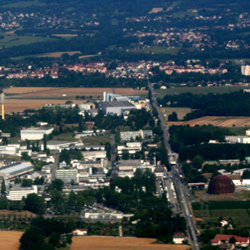
It may seem that researchers on Opera experiment are being too cautious in presenting their results. They have found that the measured time of travel of neutrinos sent from CERN to LNGS was 60 nanoseconds (a second contains 1,000,000,000 nanoseconds) shorter than expected with a statistical significance of 6 sigma – which counts as certainty at all effects in physics. And yet, they are not sure. So, why are there so many doubts? Well, in fact, a statistical test can tell you there is something going on, but not necessarily what exactly is going on. It could be that neutrinos really did travel faster than light, or it could be a systematic measurement error… A statistical test compares sets of data, but knows nothing on how they have been obtained.
That's why Antonio Ereditato, coordinator of the study, and his team didn't immediately cry out “Eureka!”. When you find an unexpected result that contradicts your previous knowledge, the first thing you think is: where is the bug? “Are all the calculations right? Are the instruments working properly? Have they been calibrated well?” That's when scientific research becomes a detective's work of finding whether there is something wrong. Opera researchers did all kind of checks for months. They measured the distance between the CERN and LNGS with utmost accuracy (20 cm); they even took into account the 7 cm displacement caused by the April 2009 L'Aquila earthquake. They asked the Swiss Metrology Institute (METAS) to synchronize both CERN and LNGS's clocks, and the German Metrology Institute (Physikalisch-Technische Bundesanstalt) independently verified the synchronization with a precision of 2 nanoseconds. After the Opera experiment researchers had checked everything they could think of without finding an error anywhere, they were compelled to accept that seemingly neutrinos were travelling faster than light. As Sherlock Homes would have put it: “when all other contingencies fail, whatever remains, however improbable [1], must be the truth.”
But with such a complex experiment, an unnoticed bug might still lay hidden somewhere in the study design. That's why physicists have decided to show up their results, in order to see if anyone can either spot a fault they haven't or confirm their results. Until then, they “deliberately do not attempt any theoretical or phenomenological interpretation of the results.” When confirmation comes, theoreticians will have occasion of explaining the results by pondering, for example, whether light speed is not a constant or if neutrinos can jump to hyperspace. The danger is wasting time in vain speculations or in the wrong direction. Again in the words of Sherlock Holmes, “it is a capital mistake to theorize before one has data. Insensibly one begins to twist facts to suit theories, instead of theories to suit facts.”




